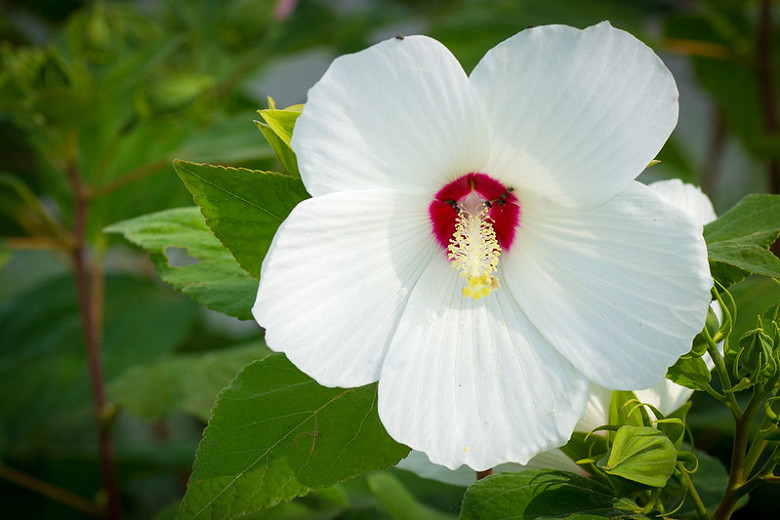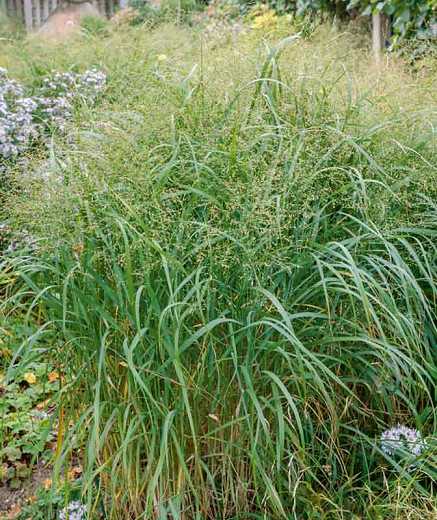The Best Companion Plants For St John's Wort
The Best Companion Plants for St John's Wort
St John's wort (Hypericum) is a beautiful and versatile flowering plant that can be found in gardens all over the world. It is known for its bright yellow flowers, which bloom in midsummer. St John's wort is also a popular medicinal herb, and has been used for centuries to treat a variety of ailments.
When choosing companion plants for St John's wort, there are a few things to keep in mind. First, St John's wort prefers full sun, so you'll want to choose plants that also thrive in sunny conditions. Second, St John's wort is a relatively drought-tolerant plant, so you don't need to worry about overwatering your companion plants.
With these factors in mind, here are some of the best companion plants for St John's wort:
- Aster oblongifolius: This tall, upright aster has blue-purple flowers that bloom in late summer. It is a good choice for attracting butterflies and other pollinators.
- Hibiscus moscheutos: This hibiscus is known for its large, showy flowers that come in a variety of colors. It is a good choice for adding a touch of tropical flair to your garden.

- Monarda fistulosa: This native North American herb has fragrant, pink or lavender flowers that bloom in midsummer. It is a good choice for attracting bees and butterflies.
- Panicum virgatum: This ornamental grass has tall, feathery plumes that bloom in late summer. It is a good choice for adding height and texture to your garden.

- Rudbeckia hirta: This coneflower has bright yellow or orange flowers that bloom in midsummer. It is a good choice for attracting butterflies and other pollinators.

- Silphium perfoliatum: This tall, architectural plant has yellow flowers that bloom in late summer. It is a good choice for adding a touch of drama to your garden.

In addition to these plants, there are many other that would make good companions for St John's wort. Some other good options include yarrow, lavender, and chamomile. When choosing companion plants, it is also important to consider the overall look and feel of your garden. By choosing plants that complement each other in terms of color, texture, and height, you can create a beautiful and harmonious gardenscape.
St. John's wort is a beautiful and versatile plant that can be used in a variety of ways, including as a companion plant. Companion planting is a gardening technique that involves planting certain plants together to benefit each other. For example, some plants attract beneficial insects that help to control pests, while others provide nutrients or shade to their neighbors.
St. John's wort is a great companion plant for a variety of other plants, including:
- Clavelina: This herb helps to repel pests and attract beneficial insects.
- Yarrow: This herb helps to improve soil drainage and repel pests.
- Bee balm: This herb attracts pollinators and helps to deter deer.
- Lavender: This herb helps to repel pests and attract pollinators.
If you're interested in learning more about St. John's wort companion planting, I recommend visiting Gardenia Inspiration. This website has a wealth of information on the subject, including a list of recommended companion plants, as well as tips on how to plant and care for St. John's wort.
FAQ of st john's wort companion planting
1. What are the benefits of companion planting with St. John's wort?
St. John's wort is a highly beneficial plant that can be used to attract pollinators, repel pests, and improve soil health. When companion planted with other plants, it can:
- Attract pollinators: The bright yellow flowers of St. John's wort attract bees, butterflies, and other pollinators. This can help to improve pollination rates for other plants in the garden.
- Repel pests: The essential oils in St. John's wort can repel pests such as aphids, spider mites, and whiteflies. This can help to protect other plants in the garden from damage.
- Improve soil health: St. John's wort is a nitrogen-fixing plant, which means that it can help to improve the nitrogen content of the soil. This can benefit other plants in the garden by providing them with a more nutrient-rich environment.
2. What are some good companion plants for St. John's wort?
Some good companion plants for St. John's wort include:
- Bee balm: Bee balm is another nectar-rich plant that attracts pollinators. It also helps to deter pests such as mosquitoes.
- Coneflower: Coneflower is a tall, showy flower that attracts pollinators and deters pests. It also helps to improve soil health by attracting earthworms.
- Lavender: Lavender is a fragrant herb that repels pests such as mosquitoes and moths. It also helps to attract pollinators.
- Yarrow: Yarrow is a hardy herb that attracts pollinators and deters pests. It also helps to improve soil health by suppressing weeds.
3. What are some of the drawbacks of companion planting with St. John's wort?
There are a few potential drawbacks to companion planting with St. John's wort. These include:
- St. John's wort can be invasive: If not properly controlled, St. John's wort can become invasive. This is because it is a prolific self-seeder.
- St. John's wort can suppress other plants: St. John's wort is a vigorous grower, and it can suppress the growth of other plants in the garden.
- St. John's wort can be toxic to animals: St. John's wort is toxic to some animals, such as cats and dogs. It is important to keep this in mind if you have pets.
4. How far apart should St. John's wort plants be planted?
St. John's wort plants should be spaced 18-24 inches apart. This will give them enough room to grow and spread without crowding out other plants.
5. When is the best time to plant St. John's wort?
St. John's wort can be planted in spring or fall. However, it is best to plant it in spring, as it will have more time to establish itself before the winter.
Image of st john's wort companion planting
- Wood's Purple Aster

Wood's Purple Aster is a tall, upright plant that blooms in late summer and fall. It attracts butterflies and other pollinators, and it can help to deter deer and rabbits.
- Hairy Wild Petunia

Hairy Wild Petunia is a low-growing groundcover plant that blooms in summer. It attracts bees and butterflies, and it can help to suppress weeds.
- Montrose White Calamint

Montrose White Calamint is a small, bushy plant that blooms in summer. It attracts bees and butterflies, and it can help to repel mosquitoes.
- Pixie Meadowbrite™ Coneflower

Pixie Meadowbrite™ Coneflower is a small, compact coneflower that blooms in summer. It attracts butterflies and other pollinators, and it can help to deter deer.
- Yarrow

Yarrow is a tall, upright plant that blooms in summer. It attracts butterflies and other pollinators, and it can help to repel pests.

Post a Comment for "The Best Companion Plants For St John's Wort"